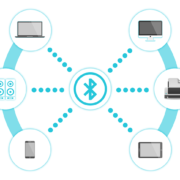3 Easy Ways to Turn Features into Benefits
Turn features into benefits…it’s the direct-response industry’s best-kept secret for boosting sales.
In fact, marketers who write about the deeper benefits sell more product and services.
Table of Contents
Why Features Aren’t Enough
When it comes to selling, simply listing your product’s features just isn’t compelling enough.
You see, features are the raw, unique characteristics of your product. Typically, they are the ‘physical’ attributes that make up a product.
For example, if you’re selling a vitamin E supplement, a list of features could include the following:
- Contains a proprietary blend of mixed tocopherols (d-alpha, d-gamma, d-delta, and d-beta tocopherol)…
- Is made of 100% natural, non-synthetic vitamin E…
- Does not contain unnecessary additives…
Of course, any natural health enthusiast might understand the significance of these “features”. Yet, as stated, they simply don’t motivate the average prospect to act. Why?
Because people are first sold emotionally.
 So, for this prospect, these features don’t present a strong enough emotional appeal. Said another way, they fail to create a strong enough psychological link between a prospect’s worries about or desires for good health and your product.
So, for this prospect, these features don’t present a strong enough emotional appeal. Said another way, they fail to create a strong enough psychological link between a prospect’s worries about or desires for good health and your product.
That’s why benefits are so important—and much more effective. That’s why you must turn features into benefits. They stir your reader’s emotions, allowing you to connect your product with their desire for some improvement in their life.
But fair warning.
While features do little to stimulate emotions in your prospect, they still offer value in a direct-response copy. Because once a prospect is “sold” on the benefits, they usually want to justify their emotional buying decision with something more rational.
Thus, features allow them to believe they made a “smart” purchase.
Benefits are Easier to Recognize Than you Think
Simply put, benefits are the specific advantages your product or service offers a prospect. Or rather, what your product or service does to improve a prospect’s quality of life.
So, in our vitamin E example above, rather than simply emphasizing that it’s “made of 100% natural, non-synthetic vitamin E…”
Say instead…
“studies show our vitamin E formula offers twice the absorption as synthetic versions to better protect the heart, brain, and skin from free radical damage.”
Or even better…
“studies show our natural vitamin E may reduce the risk of heart disease, stroke and depression, and skin cancer compared to synthetic versions.”
You can see with each improved example, a prospect experiences a deeper, more meaningful benefit from using your natural supplement over synthetic versions.
But remember, while features take a back seat to benefits when it comes to selling stuff, you should still start by listing out your features first. Then, it’ll be much easier to uncover the benefits. That’s because every single fact about a product or service can be turned into a specific advantage for your prospect.
Fortunately, with enough practice, anyone can…
Learn to Turn Features into Benefits
While it’s important to emphasize benefits instead of features throughout your marketing copy, you can read here why benefits are particularly essential to include in all your headlines.
With that, here are 3 easy ways for you to turn your product or service’s standard features into strong emotional benefits:
1. The “So what?” method.
Imagine selling a satellite internet service. One of its unique features is that it offers monthly data plans with free internet between the hours of midnight and 5:00 AM. Daily free internet data is a feature because it’s a fact about the service—it tells you something about what the service does, or what your prospect can do with your service.
Thus, to uncover the benefit, just ask yourself So what?…
Offers free internet service between midnight and 5:00 AM.
So what?
Makes it easier to manage your data usage.
So what?
No more going over your monthly data limit.
So what?
Life is less stressful. You won’t have to worry about slow internet speeds, limit how much you game online, or incur extra charges because you’ve exceeded your data limit.
This technique works in any industry too:
- Our construction and yard tools are made with special alloy material. So what? They’ll last longer than conventional tools. So what? You’ll save grief, money, and time completing your maintenance, repair, and new construction projects.
- We automatically back up your computer online. So what? You can schedule it for whenever and how often you want. So what? You can relax instead of stressing out about losing important files or wasting hours of hard work re-creating them.
- I help marketers as you talk to your audience more effectively online and in print. So what? You’ll get better quality leads who find you credible and trustworthy. So what? It’ll be easier and more economical for you to convert these leads to buyers who buy more, buy more often, and buy at higher prices.
Now you do it. Go through any of your marketing copy and find where you merely list a feature of your product or service.
See if you can make a stronger, more compelling sales argument by asking yourself, So what? And keep asking So what? until you’ve turned that feature into a real benefit.
2. The “personalization” method.
By now, you know that if you’re going to sell something to your prospect, you had better make it about them—not you.
 As it pertains to features, you must make it more personal for your reader. One way to do this is by strategically placing the word “you” into your copy. This helps your reader feel like you are talking directly to him, and only to him.
As it pertains to features, you must make it more personal for your reader. One way to do this is by strategically placing the word “you” into your copy. This helps your reader feel like you are talking directly to him, and only to him.
So, in our vitamin E example above, rather than saying “studies show our natural vitamin E may reduce the risk of heart disease, stroke and depression, and skin cancer compared to synthetic versions,” say instead, “studies show our natural vitamin E may reduce your risk of experiencing heart disease, stroke and depression, and skin cancer compared to synthetic versions.”
Or instead of just saying…
- “Lowest prices”, say instead, “You save big money with our low prices.”
- “Quietest ride in the industry,” say instead, “You’ll enjoy the quietest ride of any vehicle made today.”
- “Fastest degree program online,” say instead, “You’ll get your degree faster with us than any other online program.”
You can see how inserting your reader into the “feature” turns it into a stronger, more real “benefit” to them.
3. The “inverse” method.
Remember how buyers buy for emotional reasons first? Well, if you want to turn features into benefits, let’s start at the end first. Here’s how…
Say you’re advertising rooms available at your new assisted living facility. When you’re thinking about your facility’s “features”—like safety, nutrition, healthcare, or transportation—consider what core emotions your client or their advocate feels about that feature. Then start there.
For “safety,” it might be fear or insecurity. So instead of just saying, “our facilities are the safest in town,” you might say instead, “You get peace of mind knowing we protect your loved ones with a state-of-the-art security system, access to personal lifelines or pendants, automated emergency response, and even $50,000 of accident insurance coverage.”
By targeting the core emotions your prospect feels around any problem your product or service solves, you help him create a stronger mental link—or make a more intimate connection—to your solution.
Go ahead and give any of these methods that help turn features into benefits a try. They’re a quick and easy way to increase the profitability of your marketing messages.
About the Author

Jerry Bures is a direct-response web copywriter and marketing consultant. Since 2010, he has helped natural health, self-help and business opportunity clients—as well as local small businesses—become more visible, credible and profitable online. Read more.



